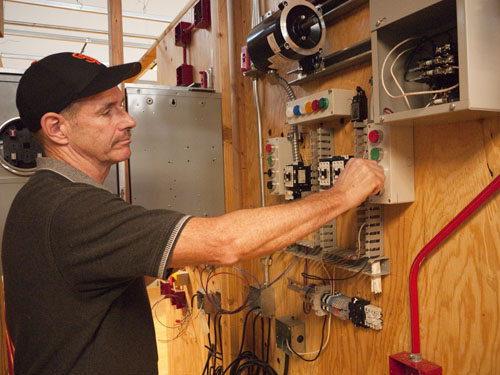
International Brotherhood
of Electrical Workers,
San Francisco Joint Apprenticeship
and Training Committee
Organized Labor
October 2009
Keeping up with the rapidly changing technology is one of the program’s biggest challenges. Instructor Larry Garvey started in the industry in the 1970s, back when they scribbled building wiring diagrams on sheet rock; now they use laptops. To meet the challenge, the instructors foster a feedback system with their students, journeymen, contractors, and building inspectors. So that they can update the curriculum, instructors are constantly listening for situations in which apprentices and even journeymen find themselves unprepared. Garvey gives an example of how complicated things can get: “In large computer rooms, there is an emergency off switch. In case of fire, it has to shut off the equipment in a certain order, and then stop the airflow going into the room, but leave the lights on for the fire department when they arrive to put out the fire. These EPO switches are often built by hand on the job.” Building these switches was not part of the curriculum in the past, but Powers, who had been an inspector, learned that many of the installations were having trouble passing inspection, slowing down projects, so they added building EPO switches to the curriculum. The apprentice program staff meets regularly to evaluate and update the curriculum to give union electricians a competitive edge in the field. “Our program will always be a work in progress, adapting to the changing conditions in the field,” Garvey explains. The electricians’ apprentice program is a five-year program. About 300 apprentices are currently enrolled, and about 80 graduate each year.
